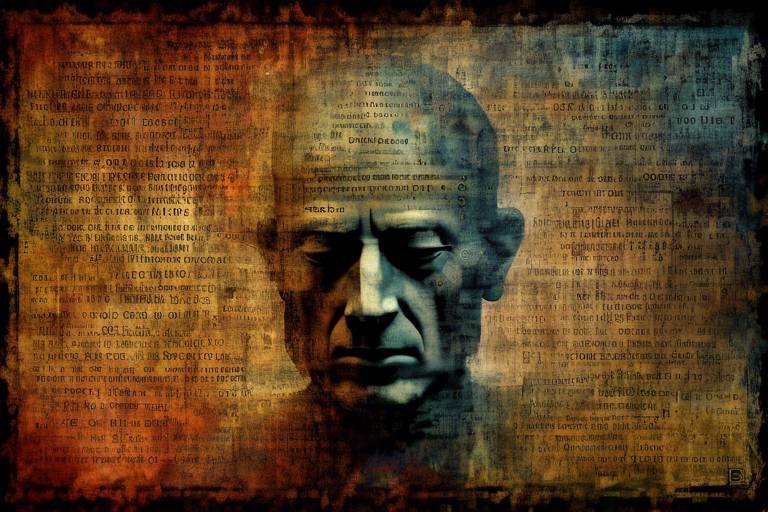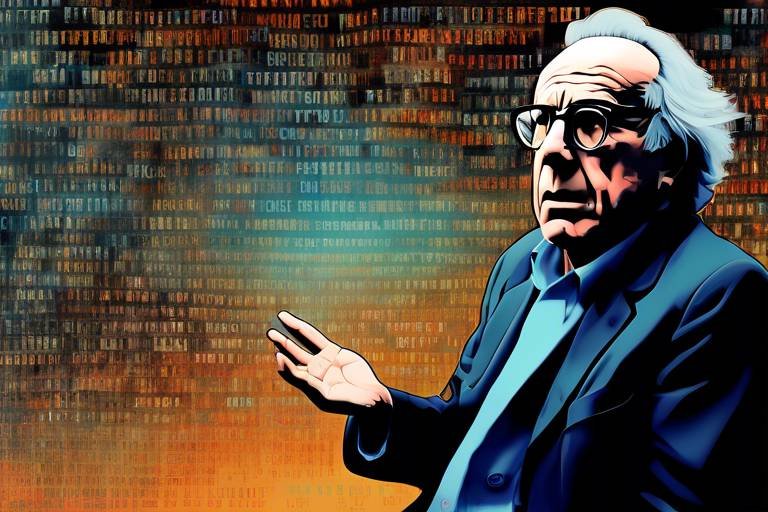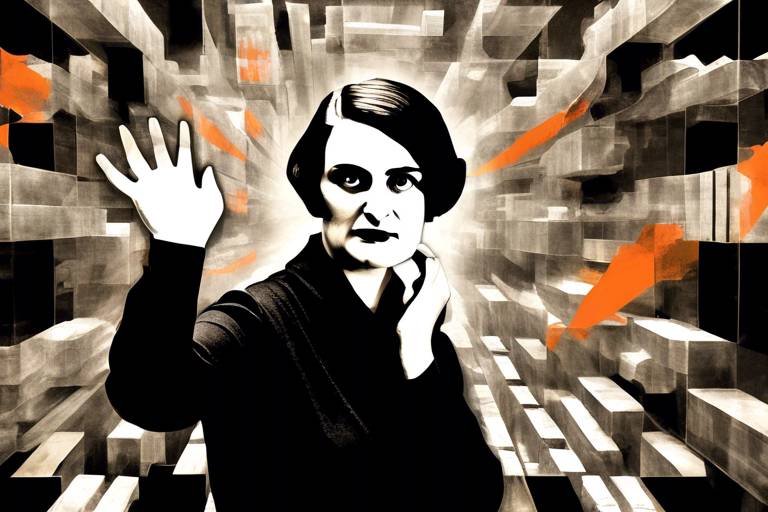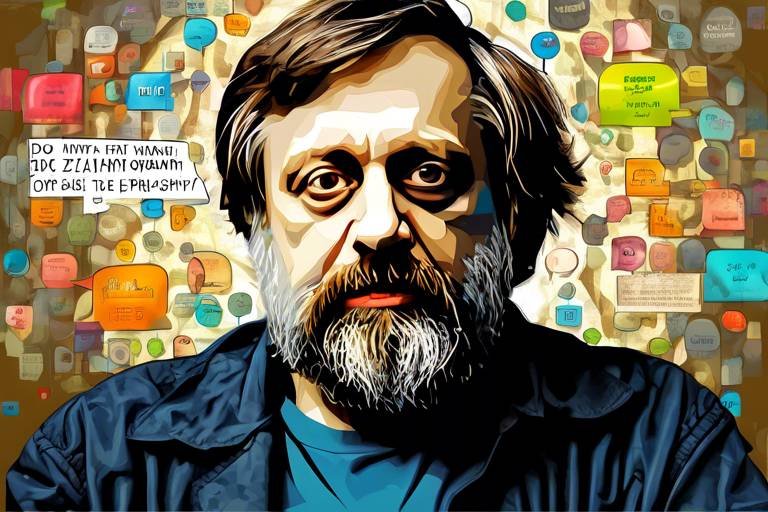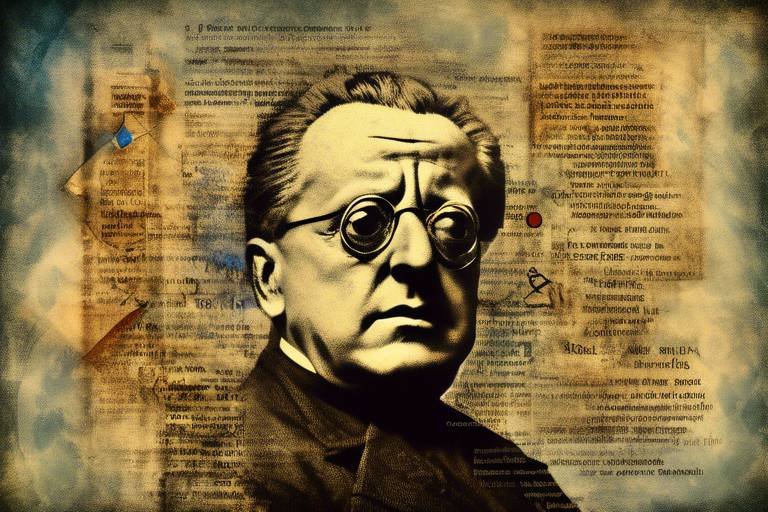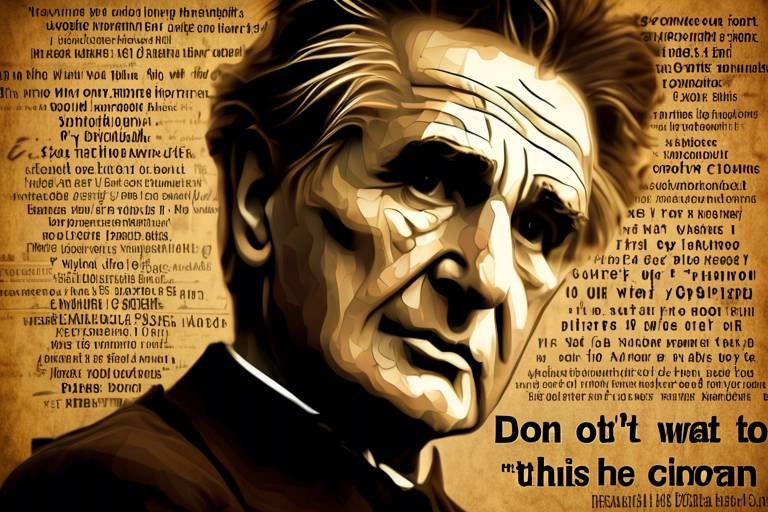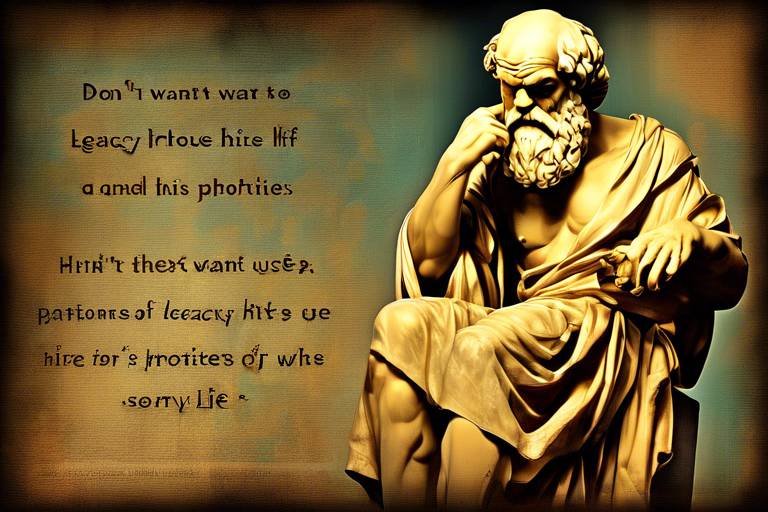Exploring Zeno's Paradoxes - A Philosophical Journey
Welcome to the intriguing world of Zeno's paradoxes, where the ordinary concept of motion and distance is turned upside down! These paradoxes, crafted by the ancient Greek philosopher Zeno of Elea, challenge our understanding of reality in ways that are both perplexing and enlightening. Imagine being stuck in a race where no matter how fast you run, you can never catch up! Sounds absurd, right? Yet, that’s the essence of Zeno’s thought experiments. They serve as a philosophical lens through which we can examine the very fabric of motion, time, and infinity.
As we embark on this philosophical journey, we’ll encounter several paradoxes that not only perplexed the minds of ancient philosophers but also continue to spark discussions in modern mathematics and physics. Each paradox presents a unique challenge, urging us to reconsider our intuitive understanding of space and time. From the Dichotomy Paradox to the Paradox of Place, Zeno's ideas have profound implications that echo through centuries of philosophical thought and scientific inquiry.
Throughout this article, we will delve into each paradox, unpacking its implications and relevance in contemporary discussions. What does it mean for something to be in motion? Can we truly understand the infinite subdivisions of space? And how do these ideas influence our grasp of reality? These questions will guide our exploration as we seek to unravel the mysteries of Zeno's thought experiments.
So, buckle up as we dive into the fascinating realms of philosophy and mathematics, where the lines between reality and abstraction blur, and where every thought leads to new questions. Are you ready to challenge your perceptions and explore the depths of Zeno's paradoxes? Let’s get started!
The Dichotomy Paradox questions the very nature of motion itself. It suggests that before one can reach a destination, they must first cover half the distance. But before they can cover half the distance, they must cover a quarter of the distance, and before that, an eighth, and so on ad infinitum. This leads to an infinite series of subdivisions that seem to imply that motion is impossible, as one can never complete an infinite number of tasks in a finite amount of time. It’s like trying to reach the end of a never-ending road; no matter how far you go, there’s always more to cover!
This paradox presents an intriguing scenario where Achilles, a swift runner, can never overtake a tortoise that has a head start. At first glance, this seems utterly nonsensical. How can a slow tortoise outrun the fastest of runners? Yet, Zeno's paradox forces us to reconsider our perceptions of speed and distance. Every time Achilles reaches the point where the tortoise was, the tortoise has moved a little further ahead. It’s as if Achilles is forever chasing a mirage!
Relative speed plays a crucial role in this paradox. It prompts discussions on how motion is perceived and calculated within philosophical and mathematical contexts. When we think about speed, we often assume a straightforward relationship between distance and time. However, Zeno’s paradox challenges this notion, suggesting that our understanding of motion is far more complex than we might initially believe.
The implications of the Achilles and the Tortoise Paradox extend into the realm of mathematics, particularly in calculus. It raises important questions about limits and convergence, where infinite series are analyzed and understood. Through calculus, we can find that while there are infinite subdivisions, the total distance can still be covered in a finite time. This realization not only resolves the paradox but enriches our understanding of mathematical concepts.
Philosophers have debated the implications of this paradox on the nature of time and space for centuries. Zeno's challenges have influenced theories of relativity and modern physics, prompting us to rethink our understanding of the universe. Are time and space continuous, or are they made up of discrete moments? These questions continue to resonate in contemporary philosophical discussions, showcasing the lasting impact of Zeno’s work.
Various approaches have been proposed to resolve the Achilles and the Tortoise Paradox. The use of calculus and the concept of limits are among the most significant. By understanding that infinite processes can lead to finite outcomes, we can reconcile Zeno’s paradox with our everyday experiences of motion. This intersection of philosophy and mathematics not only resolves the paradox but also deepens our appreciation for the complexities of reality.
- What are Zeno's Paradoxes? Zeno's paradoxes are a set of philosophical problems that challenge our understanding of motion and infinity.
- Why are they relevant today? They influence modern discussions in philosophy, mathematics, and physics, prompting us to reconsider our perceptions of time and space.
- How do we resolve these paradoxes? Through the application of calculus and the concept of limits, we can reconcile the seemingly contradictory nature of motion presented in these paradoxes.

The Dichotomy Paradox
The Dichotomy Paradox is one of Zeno's most intriguing philosophical puzzles, sparking debates that stretch across centuries. At its core, this paradox challenges our understanding of motion by suggesting that before an object can reach its destination, it must first cover half the distance to that destination. This seemingly simple statement leads to a cascade of implications, as each step can be further divided into halves, creating an infinite series of distances that must be traversed. Imagine trying to walk to a tree; first, you have to walk halfway there, then halfway to that halfway point, and so on. It’s like trying to catch a shadow—it feels just out of reach, no matter how fast you run.
This paradox raises profound questions about the nature of space and time. If motion requires completing an infinite number of tasks, can anything ever truly be in motion? Zeno's argument suggests that motion is an illusion, leading to an existential quandary: if we can never complete the infinite steps required to reach our destination, how can we ever move at all? This idea can feel counterintuitive, especially when we experience motion every day. However, Zeno's paradox forces us to reconsider our assumptions about movement and the continuity of space.
To illustrate the paradox further, consider the following breakdown:
| Step | Distance Remaining |
|---|---|
| Start | 1 (full distance) |
| After 1st Half | 0.5 |
| After 2nd Half | 0.25 |
| After 3rd Half | 0.125 |
| After 4th Half | 0.0625 |
As you can see from the table, each time you think you're getting closer to your goal, there's still some distance left to cover. This leads to an infinite regression of distances, suggesting that reaching the destination is mathematically impossible. Yet, in reality, we know that we can indeed walk to that tree!
Philosophers and mathematicians have pondered the implications of the Dichotomy Paradox for centuries. It not only questions our understanding of motion but also invites us to explore the very foundations of mathematics and physics. The paradox challenges us to reconcile the mathematical concept of infinity with the physical reality of motion. How can we understand motion if it requires completing an infinite number of tasks? This question has led to significant developments in the field of calculus, where mathematicians like Newton and Leibniz introduced methods to handle infinite series and limits, ultimately providing tools to resolve such paradoxes.
In contemporary discussions, the Dichotomy Paradox remains relevant as it touches on deeper philosophical inquiries about the nature of reality itself. Are our perceptions of motion and distance merely constructs of the mind? Or do they reflect an underlying truth about the universe? These questions continue to inspire debates among philosophers, scientists, and mathematicians alike, demonstrating that Zeno's paradoxes are not just relics of ancient thought but living questions that resonate in our understanding of the world today.
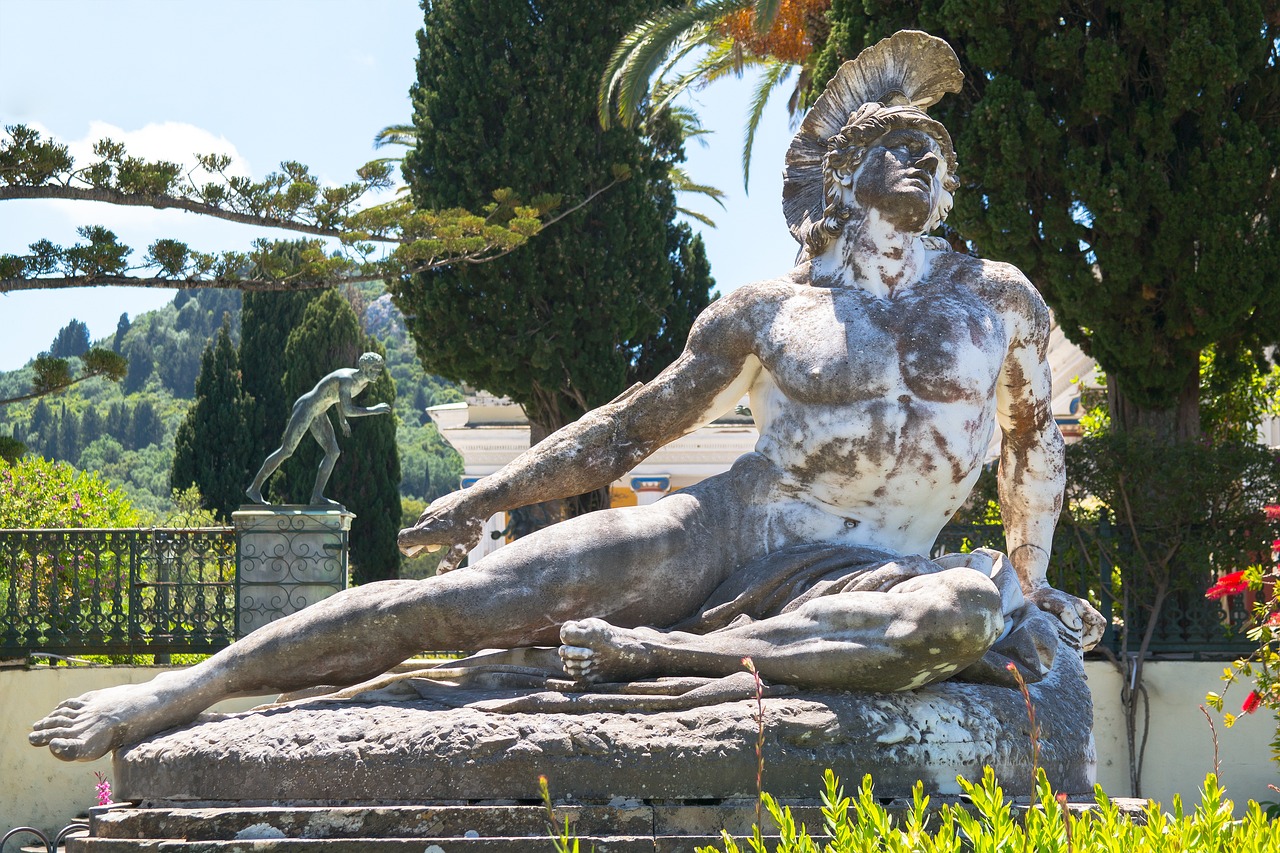
The Achilles and the Tortoise Paradox
The Achilles and the Tortoise Paradox is one of the most famous thought experiments attributed to Zeno of Elea, and it presents a fascinating challenge to our understanding of motion and speed. Imagine this: Achilles, a swift runner, is in a race against a tortoise that has a head start. The paradox suggests that Achilles can never overtake the tortoise, no matter how fast he runs. At first glance, this seems absurd—after all, Achilles is significantly faster! But Zeno's argument dives deep into the nature of distance and time, revealing the complexities of motion.
To break it down, Zeno posits that before Achilles can reach the tortoise, he must first cover half the distance between them. Once he reaches that halfway point, he still has another half to cover, and this division continues infinitely. This leads to the conclusion that Achilles will always be in pursuit, never actually catching up to the tortoise. It’s as if he’s stuck in an endless loop of chasing but never closing the gap. This paradox not only challenges our intuitive understanding of speed but also raises profound questions about the nature of reality itself.
So, what does this mean for our understanding of motion? The paradox forces us to reconsider how we perceive speed and distance. In our everyday experiences, it seems clear that faster runners can overtake slower ones. However, Zeno's thought experiment compels us to analyze the concept of motion in a more nuanced way. The implications extend beyond just running; they touch on the very fabric of mathematics and physics.
Relative speed plays a crucial role in this paradox. When we talk about speed, we often think of it in absolute terms, like a car traveling at 60 miles per hour. But Zeno's paradox invites us to explore how we measure speed in relation to other objects. In the case of Achilles and the Tortoise, the tortoise's head start creates a scenario where Achilles must continually adjust his perception of distance. This relationship between the two competitors highlights how motion is not just about speed but also about the distances involved.
From a mathematical perspective, the Achilles and the Tortoise Paradox raises critical questions about limits and convergence. In calculus, we analyze infinite series and their sums, which can help resolve the paradox. By using the concept of limits, we can demonstrate that while there are infinite points Achilles must reach, the total distance he travels can still converge to a finite value. This mathematical insight allows us to understand that while the paradox presents a seemingly insurmountable challenge, it can be resolved through rigorous mathematical reasoning.
Philosophers have long debated the implications of this paradox on the nature of time and space. The discussions it inspires influence theories of relativity and modern physics. For instance, if motion can be infinitely divided, what does that say about the continuity of time? Some philosophers argue that this paradox suggests a more complex structure of reality than we typically perceive. The interplay between the finite and the infinite becomes a central theme in philosophical discourse, prompting us to reconsider our understanding of existence itself.
Various approaches have emerged to resolve the Achilles and the Tortoise Paradox, with calculus being one of the most significant. By applying the principles of limits, we can see that Achilles does indeed catch up to the tortoise after a finite amount of time, despite the infinite subdivisions of distance. This resolution not only clarifies the paradox but also enriches our understanding of motion and speed in both philosophical and mathematical contexts.
In conclusion, the Achilles and the Tortoise Paradox is more than just a whimsical thought experiment; it serves as a gateway into profound discussions about motion, time, and the nature of reality. As we engage with this paradox, we are reminded that our understanding of the world is often more complex than it appears on the surface. It challenges us to think critically about the concepts we often take for granted and encourages a deeper exploration of the philosophical and mathematical implications of motion.
- What is the main idea behind Zeno's paradoxes? Zeno's paradoxes challenge our understanding of motion and infinity by presenting scenarios that seem to contradict our everyday experiences.
- How does the Achilles and the Tortoise Paradox relate to modern mathematics? The paradox raises questions about limits and convergence, which are fundamental concepts in calculus.
- Can the paradox be resolved? Yes, through mathematical reasoning and the application of limits, we can demonstrate that Achilles does catch up to the tortoise in a finite amount of time.
- What philosophical implications does this paradox have? It prompts discussions about the nature of time, space, and reality, influencing theories in both philosophy and physics.
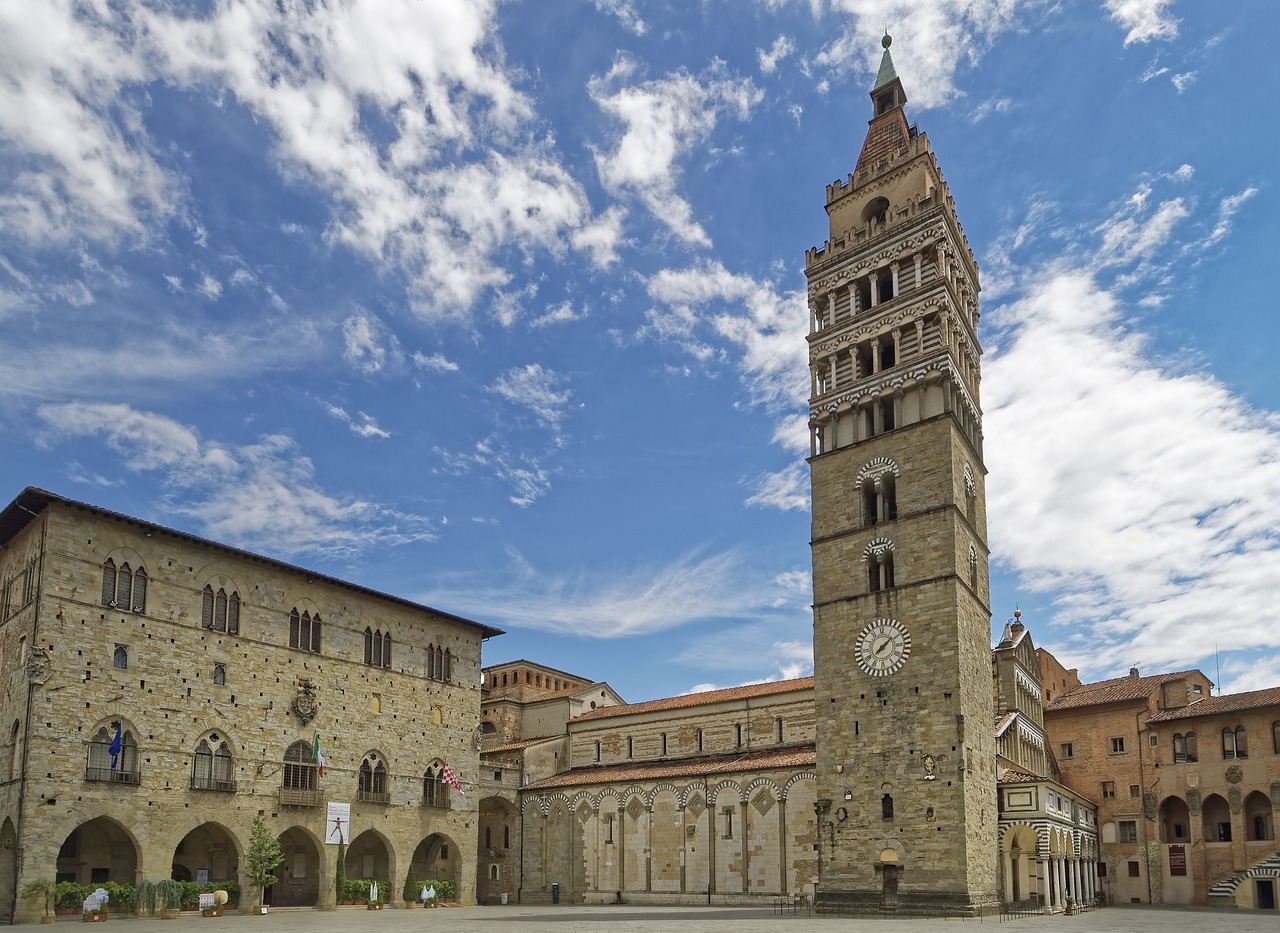
Understanding Relative Speed
When we dive into the Achilles and the Tortoise Paradox, we can't ignore the concept of relative speed. This idea is pivotal in understanding how motion works, especially in scenarios where one object seems to be perpetually chasing another. Imagine this: Achilles, the swift Greek hero, is racing against a tortoise that has a head start. At first glance, it seems absurd that Achilles, with his speed, could ever lose to a slow-moving tortoise. But Zeno's paradox throws a wrench into our intuitive understanding of motion.
Now, let's break it down. The tortoise starts ahead, and every time Achilles reaches the point where the tortoise was, the tortoise has already moved a little further ahead. This leads to an infinite series of distances that Achilles must cover. So, how can we make sense of this?
To grasp relative speed, we need to consider a few key points:
- Relative Positioning: The tortoise's head start means that Achilles has to overcome not just the distance but also the time it takes for the tortoise to move forward.
- Perception of Time: Each time Achilles reaches the tortoise's last position, the tortoise has advanced, creating a loop of continuous motion that challenges our understanding of speed.
- Mathematical Representation: The paradox can be expressed mathematically through limits, which provide a way to analyze infinite series and convergence.
This paradox forces us to rethink how we define speed and distance. In a way, it’s like trying to catch a shadow—no matter how fast you run, it seems just out of reach. But in the realm of mathematics, we can resolve this paradox through the concept of limits. By summing up the infinite series that represent the distances Achilles must cover, we find that he can indeed overtake the tortoise, albeit through a more complex understanding of motion.
Moreover, the implications of relative speed extend beyond mere racing scenarios. They challenge the fundamental notions of how we perceive time and movement in our daily lives. For instance, when you’re in a car and pass another vehicle, the relative speed between you and that vehicle can create a sense of motion that feels different depending on your perspective. This interaction of speeds shapes our understanding of everything from simple races to complex theories in physics.
In essence, the Achilles and the Tortoise Paradox not only highlights the intriguing nature of relative speed but also serves as a gateway into deeper philosophical and mathematical discussions. It compels us to ask: What does it truly mean to be in motion? And how do we measure that motion against the backdrop of an infinite universe?

Mathematical Implications
The Achilles and the Tortoise Paradox isn't just a fascinating philosophical conundrum; it also holds significant that resonate throughout the field of calculus and beyond. At first glance, the paradox appears to suggest that motion is impossible, as Achilles can never overtake the tortoise. However, this paradox provides a gateway into understanding the concepts of limits and infinite series, which are foundational to modern mathematics.
To unpack this further, let's consider how we can mathematically model the scenario. When Achilles runs to catch the tortoise, he must first reach the point where the tortoise started. By the time he reaches that point, the tortoise has moved ahead. This process can be broken down into an infinite series of steps:
| Step | Distance Covered by Achilles | Distance Covered by Tortoise |
|---|---|---|
| 1 | 0.5 meters | 0.1 meters |
| 2 | 0.25 meters | 0.05 meters |
| 3 | 0.125 meters | 0.025 meters |
| 4 | 0.0625 meters | 0.0125 meters |
As we can see from the table, each time Achilles covers half the remaining distance to the tortoise, leading to an infinite number of steps. Mathematically, this is represented as a geometric series. The sum of this series converges to a finite limit, allowing us to calculate the total time it takes for Achilles to catch the tortoise. In calculus, we learn that:
Sum of an Infinite Geometric Series: The formula for the sum of an infinite geometric series is given by:
S a / (1 - r)
where a is the first term, and r is the common ratio. In our case, the series converges, illustrating that Achilles will indeed catch the tortoise after a finite amount of time, despite the paradoxical reasoning.
This paradox also challenges our understanding of continuity and discreteness in mathematics. It raises questions about how we define motion and the nature of time itself. In essence, Zeno's paradoxes have paved the way for significant advancements in mathematical theory, particularly in understanding limits, convergence, and the behavior of infinite series. These concepts have not only shaped mathematics but have also influenced physics, especially in the realms of quantum mechanics and theory of relativity.
In conclusion, the mathematical implications of Zeno's paradoxes extend far beyond philosophical musings. They challenge us to rethink our understanding of motion, time, and space, ultimately enriching both mathematics and philosophy in profound ways.
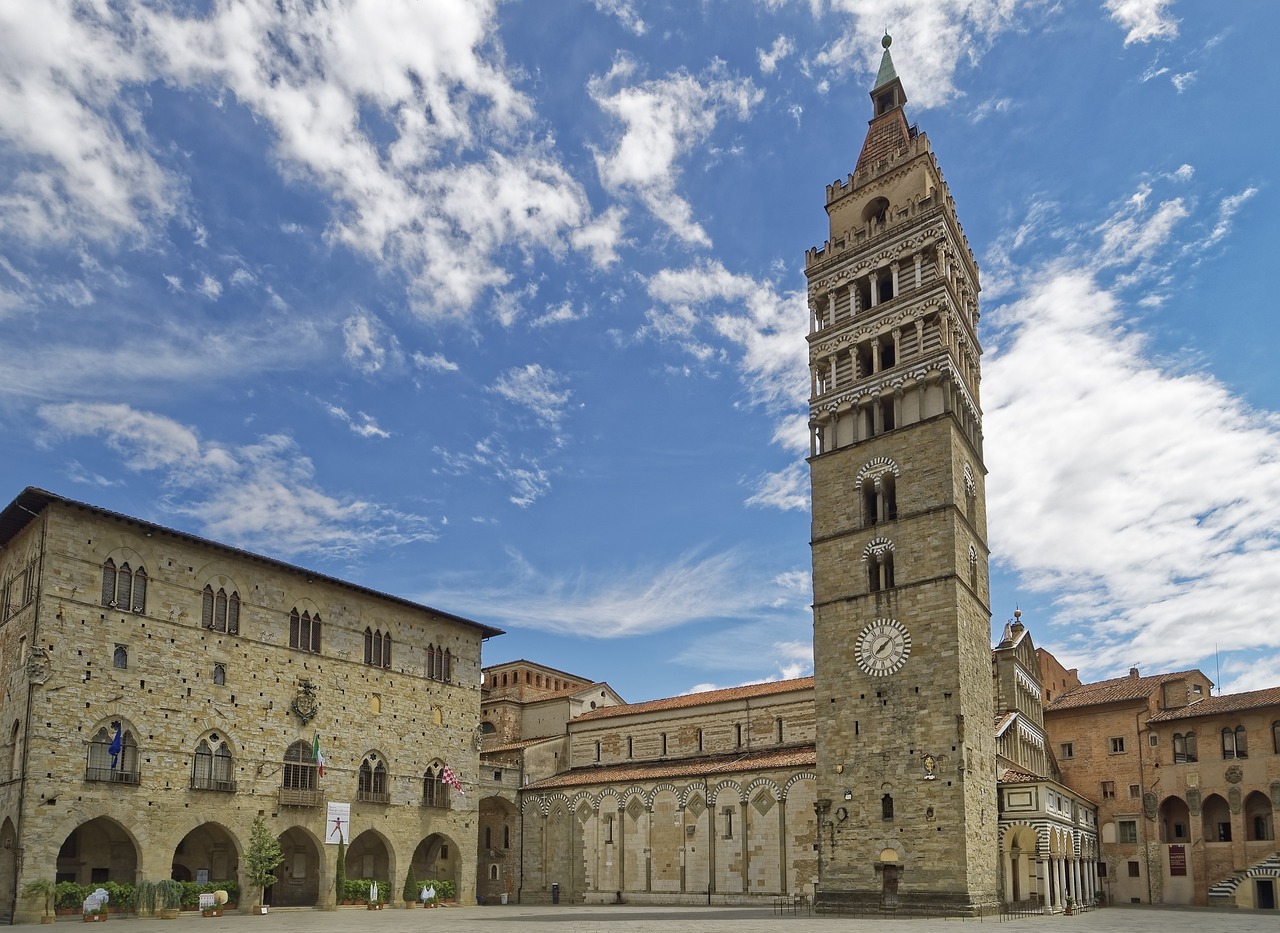
Philosophical Interpretations
When we dive into the depths of Zeno's paradoxes, especially the Achilles and the Tortoise, we find ourselves grappling with profound philosophical questions that challenge our understanding of time, space, and motion. These paradoxes are not just mathematical curiosities; they are gateways into the complexities of existence itself. For instance, the idea that Achilles can never overtake the tortoise provokes us to reconsider our intuitions about speed and distance. It makes us ponder: if motion can be infinitely subdivided, what does that say about the nature of reality?
One key interpretation comes from the realm of metaphysics, where philosophers like Aristotle attempted to address Zeno's challenges. Aristotle argued that while Zeno's reasoning was compelling, it ultimately misrepresents the nature of motion. He posited that motion is not merely a series of static moments but a continuous process. This interpretation highlights a fundamental tension between our intuitive perceptions of the world and the abstract reasoning that Zeno employs.
Moreover, the paradoxes have spurred discussions around the concept of infinity. If one can endlessly divide distance, what does that imply about the nature of space? Some philosophers argue that Zeno's paradoxes suggest a need to rethink our understanding of continuity and discreteness. Are space and time infinitely divisible, or do they have a fundamental structure that prevents such infinite regress? This leads us to consider the implications of quantum mechanics and the idea that at a fundamental level, reality might be discrete rather than continuous.
Furthermore, Zeno's paradoxes have influenced modern philosophical discussions, particularly in relation to theories of relativity. The notions of simultaneity and the relativity of motion challenge our classical understanding of time and space, echoing Zeno's sentiments. For example, if two observers moving at different speeds perceive time and space differently, how does that align with Zeno's assertion that motion is an illusion? This intersection of Zeno's ideas with contemporary physics illustrates the enduring relevance of his work.
In conclusion, Zeno's paradoxes serve as a rich source of philosophical inquiry. They force us to confront our preconceptions about motion, time, and the very fabric of reality. As we continue to explore these ideas, we find that the questions Zeno raised centuries ago remain just as pertinent today, inviting us to engage with the mysteries of existence in new and exciting ways.
- What are Zeno's paradoxes? Zeno's paradoxes are a set of philosophical problems formulated by Zeno of Elea, which challenge our understanding of motion and infinity.
- How do Zeno's paradoxes relate to modern physics? They highlight fundamental questions about the nature of space and time, influencing theories of relativity and quantum mechanics.
- Can Zeno's paradoxes be resolved? Yes, various mathematical approaches, including calculus and limits, have been developed to address these paradoxes.
- What is the significance of the Achilles and the Tortoise paradox? It illustrates the complexities of motion and speed, prompting discussions on the nature of infinity and continuity.

Resolving the Paradox
The Dichotomy Paradox questions the nature of motion by suggesting that before one can reach a destination, they must first cover half the distance, leading to infinite subdivisions of distance.
This paradox illustrates a scenario where Achilles, a swift runner, can never overtake a tortoise that has a head start, challenging our perceptions of speed and distance.
Relative speed plays a crucial role in this paradox, prompting discussions on how motion is perceived and calculated within philosophical and mathematical contexts.
The paradox raises important questions about limits and convergence in mathematics, particularly in calculus, where infinite series are analyzed and understood.
Philosophers have debated the implications of this paradox on the nature of time and space, influencing theories of relativity and modern physics.
Resolving the Achilles and the Tortoise Paradox has intrigued mathematicians and philosophers alike for centuries. One of the most significant approaches involves the use of calculus and the concept of limits. By applying these mathematical tools, we can understand that while there are indeed infinite subdivisions of distance, the total distance can be traversed in a finite amount of time. This realization shifts our perspective from viewing motion as an endless series of tasks to recognizing it as a complete journey that can be quantified.
To illustrate this, consider the following table that summarizes the key points in resolving the paradox:
| Concept | Description |
|---|---|
| Infinite Series | The sum of an infinite series can converge to a finite limit. |
| Calculus | Calculus allows us to analyze motion and change, providing tools to tackle paradoxes. |
| Limits | Limits help us understand how values approach a particular point, making sense of infinite processes. |
Another approach to resolving this paradox is through philosophical interpretation. Some philosophers argue that our understanding of motion and time is fundamentally flawed. They suggest that motion is not merely a series of incremental steps but rather a continuous flow that cannot be dissected into infinite parts without losing its essence. This perspective invites us to rethink our assumptions about space and time, encouraging a more holistic view of reality.
In essence, resolving the Achilles and the Tortoise Paradox is not just about finding a mathematical solution; it’s about expanding our understanding of the universe. The discussions surrounding this paradox have profound implications, influencing not only mathematics but also our philosophical outlook on life, motion, and existence.
Zeno's Arrow Paradox posits that for an arrow in flight, at any single moment in time, it is at rest, leading to questions about the nature of time and motion.
This subheading explores the idea of time being composed of discrete moments, challenging the continuous nature of motion and its implications for reality.
The debate between continuous and discrete motion has significant implications in physics and philosophy, influencing theories of time, space, and reality.
The Stadium Paradox presents a scenario involving three rows of objects moving past each other, raising complex questions about relative motion and simultaneity.
This paradox emphasizes the relativity of motion, challenging our intuitive understanding of speed and distance, and prompting deeper philosophical inquiry.
The concepts explored in the Stadium Paradox have applications in modern physics, particularly in understanding relativistic effects in high-speed scenarios.
Zeno's Paradox of Place questions the existence of space, suggesting that if everything occupies a place, there must be a place for that place, leading to infinite regress.
The Paradox of Place raises significant ontological questions about existence and the nature of reality, influencing metaphysical discussions throughout history.
Contemporary philosophers continue to engage with Zeno's ideas, offering various interpretations and responses that shape our understanding of space and existence today.
- What are Zeno's paradoxes? Zeno's paradoxes are a set of philosophical problems that challenge our understanding of motion, space, and time.
- How do these paradoxes relate to modern physics? They raise questions about the nature of infinity and continuity, which are crucial in fields like calculus and physics.
- Can these paradoxes be resolved? Yes, through mathematical concepts like limits and calculus, as well as philosophical interpretations that challenge our understanding of motion.

The Arrow Paradox
The Arrow Paradox is one of Zeno's most intriguing challenges to our understanding of motion and time. Imagine an arrow in flight. At any single instant, the arrow occupies a specific position in space. Zeno argues that if we consider any moment in time, the arrow is not moving; it is simply at rest in its position. This leads to a perplexing conclusion: if the arrow is always at rest at every single moment, how can it ever be in motion? This paradox invites us to question the very fabric of reality and the nature of time itself.
To grasp the implications of this paradox, we must consider the concept of temporal discreteness. Zeno's argument suggests that time is not a continuous flow but rather a series of discrete moments. If time consists of a series of individual, unchanging snapshots, how can motion, which seems to require change, occur at all? This challenges our intuitive understanding of motion, leading us to ponder whether the flow of time is merely an illusion.
Furthermore, the debate between continuous and discrete motion plays a significant role in both philosophical and scientific discussions. In physics, the notion of continuous motion aligns with classical mechanics, where objects move smoothly through space. However, if we accept Zeno's perspective, we must reconsider our fundamental assumptions about motion, time, and space. This has profound implications for theories of relativity and quantum mechanics, where the nature of time and motion becomes increasingly complex.
To illustrate the paradox more clearly, consider the following table that summarizes the key aspects of the Arrow Paradox:
| Aspect | Description |
|---|---|
| Instantaneous Position | The arrow is at rest at every moment in time. |
| Temporal Discreteness | Time may be composed of discrete moments rather than a continuous flow. |
| Implications for Reality | Challenges our understanding of motion and the nature of time. |
In conclusion, the Arrow Paradox not only raises essential questions about motion and time but also encourages us to explore the deeper philosophical implications of our understanding of reality. As we navigate through these complex ideas, we find ourselves at the intersection of philosophy and science, where the mysteries of existence continue to unfold.
- What is Zeno's Arrow Paradox? It posits that an arrow in flight is at rest at every moment in time, leading to questions about motion.
- How does the Arrow Paradox relate to modern physics? It challenges our understanding of continuous motion, influencing theories in relativity and quantum mechanics.
- What are the implications of temporal discreteness? It suggests that time may not flow continuously, which has profound implications for our understanding of reality.
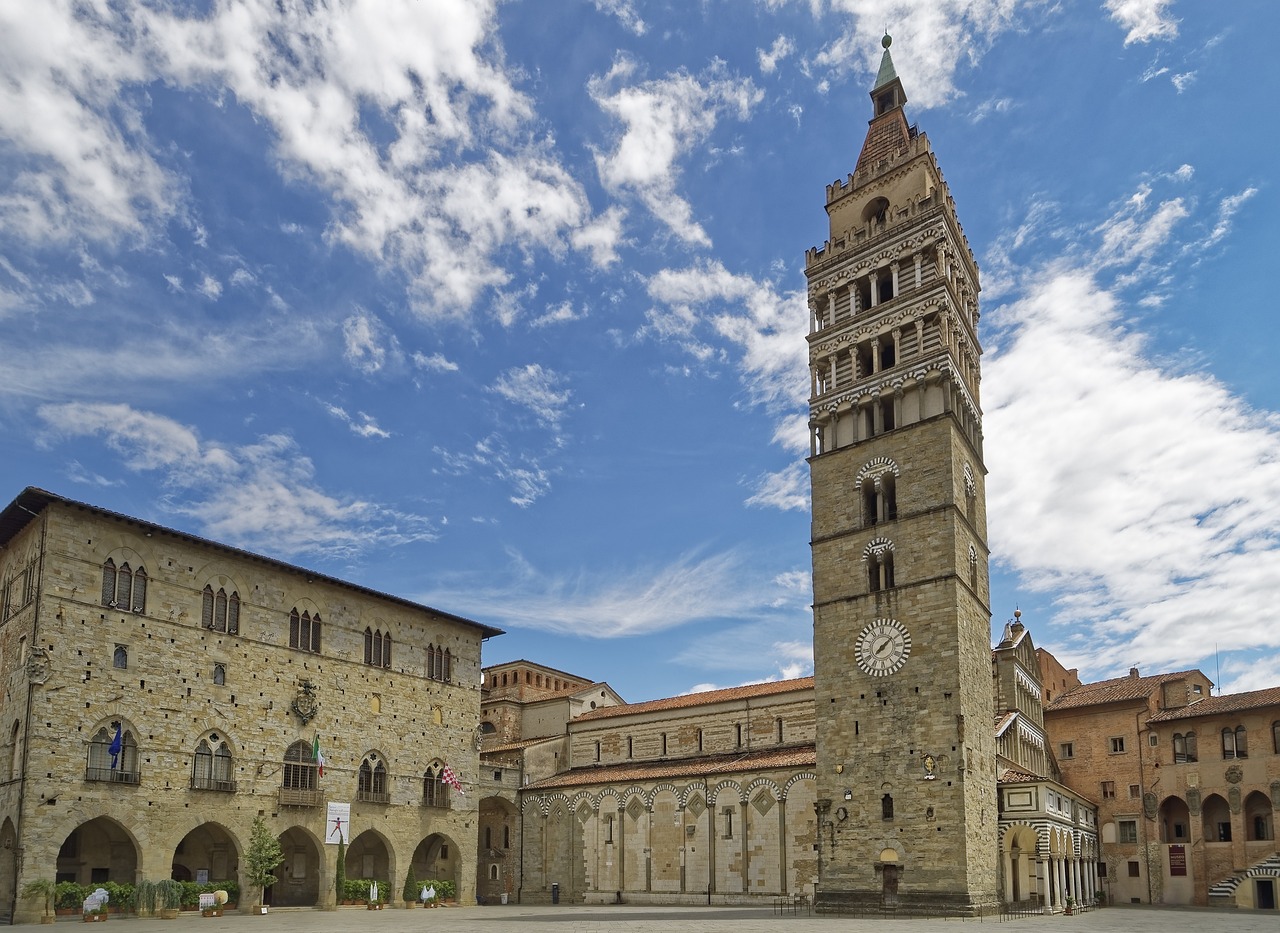
Temporal Discreteness
The concept of presents a fascinating lens through which we can examine the nature of time and motion. Imagine time as a film reel, where each frame captures a distinct moment. If we consider time to be composed of these discrete moments, we begin to question the very fabric of reality. How do we reconcile our everyday experiences of continuous motion with the idea that time might be made up of individual, separate instances?
At first glance, it seems counterintuitive. After all, when we perceive an arrow in flight, we witness its smooth trajectory across the sky. Yet, according to Zeno's Arrow Paradox, if we focus on any single moment in time, the arrow is not moving; it is simply occupying a position in space. This leads to a perplexing conclusion: if every moment is static, how can we experience motion at all?
To explore this further, we can think of time as a series of snapshots rather than a flowing river. In this model, each snapshot represents a moment of existence, leading us to ponder several intriguing questions:
- What happens between these snapshots? Is there a continuum, or do we leap from one moment to the next?
- If time is discrete, how do we account for the fluidity of our experiences?
- What implications does this have for our understanding of causality and change?
Philosophers have long debated these questions, with some advocating for a discrete model of time while others argue for its continuous nature. The implications of this debate extend far beyond mere theory; they touch on how we understand motion, existence, and even the universe itself. For instance, in physics, the idea of discrete time intervals can lead to various interpretations of quantum mechanics, where particles exist in specific states at specific times.
Moreover, the implications of temporal discreteness challenge our conventional understanding of causality. If time is made up of individual moments, can we still claim that one event causes another in a linear fashion? Or do we need to rethink the very nature of cause and effect? This is a profound inquiry that continues to inspire both philosophical and scientific exploration.
In the end, the exploration of temporal discreteness not only invites us to reconsider our understanding of time but also encourages us to engage with the fundamental questions of existence. Are we simply a series of moments strung together, or is there a deeper, more continuous reality that underpins our experiences? This philosophical journey is as much about understanding ourselves as it is about grasping the universe we inhabit.
- What is temporal discreteness? Temporal discreteness is the idea that time is composed of distinct, separate moments rather than being a continuous flow.
- How does temporal discreteness relate to Zeno's paradoxes? Zeno's paradoxes challenge our understanding of motion and time, suggesting that if time consists of discrete moments, then motion may be an illusion.
- What are the implications of temporal discreteness in physics? In physics, temporal discreteness can influence interpretations of quantum mechanics and our understanding of causality.
- Do philosophers agree on the nature of time? No, there is ongoing debate among philosophers about whether time is discrete or continuous, each perspective offering unique insights.

Continuous vs. Discrete Motion
When we dive into the debate of , we are essentially exploring two different ways of understanding how objects move through space and time. Imagine a smooth road stretching endlessly; this represents continuous motion, where movement is fluid and uninterrupted. On the other hand, think of a series of stepping stones across a stream; each step represents discrete motion, where movement occurs in distinct, separate intervals. This distinction is not just academic; it has profound implications for how we perceive reality.
The concept of continuous motion suggests that an object can occupy any position along its path at any given moment. This idea aligns with our everyday experiences—when we watch a car drive down the street, it appears to move smoothly without any breaks. However, when we analyze motion at a deeper level, particularly in physics, we encounter the notion that time itself might be composed of discrete moments. This leads us to question: if time is made up of individual 'ticks,' can motion still be considered continuous?
In the realm of physics, the distinction between these two types of motion becomes critical, especially when we consider the implications for theories of time and space. For instance, in quantum mechanics, particles are often described as existing in discrete states, yet they can exhibit wave-like behavior that suggests continuity. This duality challenges our traditional understanding and forces us to rethink fundamental concepts. The philosophical ramifications are equally significant; if motion can be both continuous and discrete, what does that mean for our understanding of reality itself?
To illustrate this complex relationship, consider the following table that summarizes key differences between continuous and discrete motion:
| Aspect | Continuous Motion | Discrete Motion |
|---|---|---|
| Definition | Movement without interruption | Movement in distinct intervals |
| Examples | A car driving smoothly | Stepping on stones in a stream |
| Mathematical Representation | Calculus (limits, derivatives) | Algebra (sequences, series) |
| Implications | Challenges traditional physics | Influences quantum mechanics |
Ultimately, the debate over continuous versus discrete motion invites us to contemplate the very nature of existence. Are we simply a series of discrete moments strung together, or do we flow seamlessly through time and space? This inquiry not only fuels philosophical discussions but also inspires scientific exploration, as researchers seek to reconcile these two seemingly contradictory perspectives.
As we navigate through these complex ideas, it’s important to remember that they are not just theoretical musings. The implications of this debate can be seen in various fields, from physics to philosophy, and even in our daily lives as we attempt to understand the world around us. So, the next time you observe motion—be it a bird in flight or a train rushing by—take a moment to ponder: is it continuous, discrete, or perhaps a fascinating blend of both?
- What is continuous motion? Continuous motion refers to movement that occurs without breaks or interruptions, allowing an object to occupy any position at any moment.
- What is discrete motion? Discrete motion involves movement that happens in distinct, separate intervals, often represented by individual steps or states.
- Why is the debate between continuous and discrete motion important? This debate has significant implications for our understanding of time, space, and the fundamental nature of reality in both philosophy and physics.
- How does this debate relate to modern physics? The concepts of continuous and discrete motion are crucial in theories such as quantum mechanics, where particles can exhibit both wave-like and particle-like behaviors.

The Stadium Paradox
The Stadium Paradox is one of Zeno's most intriguing thought experiments, presenting a scenario that involves three rows of objects moving past each other at different speeds. Imagine a race where you have three lines of athletes: one moving to the left, one to the right, and one standing still. As these rows of athletes pass one another, we are prompted to consider the nature of motion, speed, and how we perceive these concepts in our everyday lives. This paradox raises complex questions about relative motion and simultaneity, challenging our intuitive understanding of how objects move in relation to one another.
At first glance, it seems straightforward: if an object is moving, it should be easy to measure its speed in relation to another object. However, Zeno's paradox forces us to confront the idea that motion is not as simple as it appears. As the rows of athletes move, we must ask ourselves: how do we define speed? Is it absolute, or is it relative to the observer's point of view? This is where the paradox deepens, as it reveals the limitations of our understanding of motion.
To illustrate this further, let's consider the following scenario: if the left-moving athletes are running at 10 meters per second, and the right-moving athletes are running at 5 meters per second, how do we perceive their speeds relative to the stationary athletes? The answer is not as clear as one might think. The perception of speed can vary dramatically depending on the observer's frame of reference. This concept is crucial in both philosophy and physics, as it leads us to question the very fabric of reality itself.
Additionally, the Stadium Paradox invites us to explore the implications of relativity in motion. In the realm of modern physics, particularly with Einstein's theory of relativity, we learn that speed is not an absolute measure but rather a relative one. This realization has profound implications for our understanding of the universe, affecting everything from how we perceive time to how we interpret the motion of celestial bodies.
In essence, the Stadium Paradox serves as a reminder that our intuitive grasp of motion and speed may not be as reliable as we believe. It prompts us to delve deeper into the philosophical and mathematical discussions surrounding motion, pushing the boundaries of how we conceptualize reality. As we continue to unravel the complexities of motion, we find that Zeno's paradoxes remain relevant, challenging us to think critically about the world around us.
Understanding the relativity of motion is crucial in grasping the full implications of the Stadium Paradox. When we consider motion as relative, we open the door to a myriad of questions about how we experience the world. For instance, if two objects are moving towards each other, how do we determine which one is moving faster? Is it based solely on their speed, or do we need to take into account the perspective of the observer? This line of inquiry leads us to a deeper understanding of simultaneity and how our perceptions shape our reality.
The concepts explored in the Stadium Paradox have significant applications in modern physics, particularly in understanding relativistic effects in high-speed scenarios. For example, when particles move at speeds approaching the speed of light, their behavior deviates from our everyday experiences of motion. This leads to fascinating phenomena such as time dilation and length contraction, which challenge our traditional notions of space and time. As physicists continue to study these effects, they find that Zeno's paradoxes provide a valuable framework for exploring the complexities of motion in the universe.
- What is the Stadium Paradox? The Stadium Paradox is a thought experiment by Zeno that examines the nature of relative motion through a scenario involving three rows of objects moving past each other.
- How does the Stadium Paradox relate to modern physics? The paradox highlights the relativity of motion, which is a key concept in modern physics, particularly in the context of Einstein's theory of relativity.
- Why is Zeno's paradox still relevant today? Zeno's paradoxes challenge our understanding of motion and reality, prompting philosophical and scientific discussions that continue to influence contemporary thought.

Understanding Relativity of Motion
When we dive into the concept of relativity of motion, it’s like peeling an onion; each layer reveals deeper complexities that challenge our everyday understanding. At first glance, motion seems straightforward—if you’re moving faster than someone else, you’re obviously going to get ahead, right? But Zeno’s Stadium Paradox throws a curveball into this intuitive notion. It forces us to confront the idea that motion is not as absolute as we often perceive it to be.
Imagine a race between three rows of objects, each moving at different speeds. You might think that the fastest row would always be the first to finish, but Zeno’s paradox suggests that it’s not that simple. The relative motion between these rows can lead to a situation where the fastest row might not be the one that crosses the finish line first due to the way we perceive speed and distance. This is a classic example of how our understanding of motion can be influenced by perspective.
To put it simply, the relativity of motion can be summarized in a few key points:
- Observer Perspective: The speed and position of an object can vary drastically depending on the observer's frame of reference.
- Simultaneity: Two events that appear simultaneous in one frame may not be simultaneous in another, complicating our understanding of time.
- Acceleration and Deceleration: The perception of motion can change based on whether an object is speeding up or slowing down, adding layers to how we interpret movement.
In essence, the relativity of motion challenges us to think critically about how we define speed and distance. It’s not just about how fast you’re moving, but also about how that movement is perceived by others. This idea resonates in various fields, from physics to philosophy, as it encourages us to reconsider our assumptions about reality.
In modern physics, particularly in the realm of Einstein's theory of relativity, the implications of relative motion are profound. They suggest that time and space are interwoven in ways that defy our traditional understanding. For instance, as an object approaches the speed of light, time appears to slow down relative to an outside observer. This phenomenon is not just theoretical; it's been confirmed through numerous experiments, such as those involving particles moving at high speeds in particle accelerators.
Ultimately, grasping the relativity of motion isn’t just an academic exercise. It has real-world applications, influencing everything from GPS technology to our understanding of the universe. By embracing the complexities of motion, we can better appreciate the intricate dance of objects in space and time, leading to a richer understanding of our place in the cosmos.
- What is the relativity of motion? The relativity of motion refers to how the speed and position of an object can change depending on the observer's frame of reference.
- How does Zeno's paradox relate to modern physics? Zeno's paradoxes challenge our intuitive understanding of motion and have influenced theories of relativity in modern physics.
- Why is understanding motion important? Understanding motion is crucial as it affects various aspects of physics, technology, and our perception of reality.

Applications in Modern Physics
This article delves into Zeno's paradoxes, exploring their implications for philosophy, mathematics, and our understanding of motion and infinity. We will investigate each paradox and its relevance in contemporary discussions.
The Dichotomy Paradox questions the nature of motion by suggesting that before one can reach a destination, they must first cover half the distance, leading to infinite subdivisions of distance.
This paradox illustrates a scenario where Achilles, a swift runner, can never overtake a tortoise that has a head start, challenging our perceptions of speed and distance.
Relative speed plays a crucial role in this paradox, prompting discussions on how motion is perceived and calculated within philosophical and mathematical contexts.
The paradox raises important questions about limits and convergence in mathematics, particularly in calculus, where infinite series are analyzed and understood.
Philosophers have debated the implications of this paradox on the nature of time and space, influencing theories of relativity and modern physics.
Various approaches have been proposed to resolve the Achilles and the Tortoise Paradox, including the use of calculus and the concept of limits.
Zeno's Arrow Paradox posits that for an arrow in flight, at any single moment in time, it is at rest, leading to questions about the nature of time and motion.
This subheading explores the idea of time being composed of discrete moments, challenging the continuous nature of motion and its implications for reality.
The debate between continuous and discrete motion has significant implications in physics and philosophy, influencing theories of time, space, and reality.
The Stadium Paradox presents a scenario involving three rows of objects moving past each other, raising complex questions about relative motion and simultaneity.
This paradox emphasizes the relativity of motion, challenging our intuitive understanding of speed and distance, and prompting deeper philosophical inquiry.
The concepts explored in Zeno's paradoxes have profound applications in modern physics, particularly in areas such as relativity and quantum mechanics. For instance, the ideas surrounding motion and time have influenced Einstein's theory of relativity, which fundamentally reshaped our understanding of space and time as interconnected dimensions rather than separate entities.
Moreover, Zeno's paradoxes stimulate discussions in the realm of quantum physics, where the nature of particles and their behaviors at subatomic levels often defy classical intuition. The Arrow Paradox, for example, can be likened to the concept of a particle's position being indeterminate until measured, prompting physicists to question how motion is perceived at such tiny scales.
Another significant application is in the field of cosmology. The infinite regress suggested by the Paradox of Place raises questions about the structure of the universe and the very fabric of reality. Scientists and philosophers alike ponder whether space itself is infinite or if it has boundaries, which can lead to a deeper understanding of the universe's origins and its ultimate fate.
In practical terms, Zeno's paradoxes encourage physicists to develop models that account for discrete events rather than assuming continuous motion. This shift in perspective has led to advancements in various technologies, including those used in GPS systems and particle accelerators, where precise calculations of motion and time are crucial.
In summary, Zeno's paradoxes are not merely historical curiosities; they have real implications in modern physics, challenging our understanding and inspiring ongoing research in the quest to comprehend the universe.
Zeno's Paradox of Place questions the existence of space, suggesting that if everything occupies a place, there must be a place for that place, leading to infinite regress.
The Paradox of Place raises significant ontological questions about existence and the nature of reality, influencing metaphysical discussions throughout history.
Contemporary philosophers continue to engage with Zeno's ideas, offering various interpretations and responses that shape our understanding of space and existence today.
- What are Zeno's paradoxes? Zeno's paradoxes are a set of philosophical problems that challenge our understanding of motion, space, and time.
- Why are Zeno's paradoxes important? They have implications in mathematics, physics, and philosophy, prompting discussions about the nature of reality.
- How do Zeno's paradoxes relate to modern physics? They influence theories in relativity and quantum mechanics, shaping our understanding of motion and time.
- Can Zeno's paradoxes be resolved? Yes, various mathematical approaches, including calculus, have been developed to address the paradoxes.

The Paradox of Place
The Paradox of Place is one of Zeno's intriguing philosophical challenges that compels us to reconsider our understanding of space and existence. Imagine a world where every object occupies a specific location. If everything is indeed in a place, then we must ask: where is that place? This seemingly simple question leads to a convoluted exploration of infinite regress, suggesting that if every place must have a place, we could end up in an endless loop of locations. It's like trying to find the end of a rainbow; the more you chase it, the further it seems to get!
This paradox raises profound ontological questions about existence. Are places real entities, or are they merely abstractions we use to make sense of the world around us? Zeno's proposition invites us to ponder the nature of reality itself. If we accept that a place exists for every object, then we are led to the conclusion that there must be a place for the place itself, leading to an infinite hierarchy of places. This, of course, defies our intuitive understanding of space and challenges the very foundation of how we perceive our surroundings.
To illustrate this paradox, consider the following scenario:
| Object | Location | Place of Location |
|---|---|---|
| Apple | On the table | In the kitchen |
| Kitchen | In the house | On the street |
| Street | In the city | On the planet |
This table exemplifies how each object occupies a space, yet each space has its own location, leading us down a rabbit hole of infinite places. It’s a philosophical conundrum that has captivated thinkers for centuries, prompting debates about the very fabric of reality and existence.
Modern philosophers have taken up Zeno’s mantle, offering various interpretations and responses that resonate with contemporary discussions on metaphysics. They explore whether space is a tangible entity or merely a conceptual framework we use to navigate our experiences. Some argue that space is a relational construct, dependent on the interactions between objects, while others maintain that it exists independently of those interactions.
Ultimately, the Paradox of Place challenges us to rethink our assumptions about the world. It invites us to engage in deeper philosophical inquiry and to question the nature of reality itself. As we navigate through life, we might ponder: Is there ever a definitive answer to the question of place, or are we destined to wander through an infinite landscape of abstract concepts?
- What is the Paradox of Place? The Paradox of Place is a philosophical challenge posed by Zeno that questions the nature of space and existence, suggesting that if everything occupies a place, there must be a place for that place, leading to infinite regress.
- How does this paradox affect our understanding of reality? It challenges our intuitive notions of space and existence, prompting deeper philosophical inquiries into the nature of reality and whether places are real entities or mere abstractions.
- What are modern philosophical responses to the Paradox of Place? Contemporary philosophers explore various interpretations, debating whether space is a tangible entity or a relational construct dependent on interactions between objects.

Implications for Ontology
The Paradox of Place raises profound questions about the very fabric of existence and the nature of reality. When Zeno posits that if everything occupies a place, then there must be a place for that place, he invites us to ponder the implications of infinite regress. This notion forces us to confront the core of ontological inquiry: what does it mean for something to exist? Are we merely caught in a web of definitions that lead us nowhere, or is there a solid foundation upon which our understanding of existence can stand?
In grappling with Zeno's paradox, philosophers have been compelled to reconsider the nature of space itself. If we accept that every object requires a location, we must also accept that this leads to an endless hierarchy of places, each requiring its own place ad infinitum. This conundrum suggests that our traditional notions of space and existence may not be as straightforward as we once believed. It challenges the assumption that space is a simple container for objects, urging us to explore more complex models of reality.
Moreover, the implications of Zeno's paradox extend into modern discussions in metaphysics, particularly concerning the concept of substance. If every place necessitates another place, does that mean substances are inherently linked to an infinite network of relationships? This could lead to a view of reality as a web of interconnected entities rather than isolated objects. Philosophers like Gottfried Wilhelm Leibniz and Immanuel Kant have engaged with these ideas, suggesting that our understanding of space and time is not merely empirical but shaped by our perceptions and cognitive frameworks.
In contemporary philosophy, the implications of Zeno's paradox have spurred debates on the nature of continuity and discreteness. Are time and space fundamentally continuous, or do they consist of discrete moments and locations? This question is not merely academic; it has real-world applications in physics, especially in theories of quantum mechanics and relativity. The exploration of these ideas has led to a deeper understanding of how we perceive the universe and our place within it.
Ultimately, Zeno's Paradox of Place serves as a catalyst for ontological exploration. It compels us to question our assumptions and encourages a re-evaluation of the concepts we take for granted. By engaging with these ancient paradoxes, we can uncover new insights into the nature of reality, existence, and the very essence of what it means to be.
- What is Zeno's Paradox of Place? - It questions the existence of space by suggesting that if everything occupies a place, there must be a place for that place, leading to infinite regress.
- How does Zeno's paradox influence modern philosophy? - It challenges our understanding of existence and has implications for theories related to space, time, and substance.
- What are the implications for ontology? - Zeno's paradox raises significant questions about the nature of reality, prompting philosophical inquiry into the interconnectedness of objects and the structure of existence.

Modern Philosophical Responses
In the realm of philosophy, Zeno's paradoxes have sparked a plethora of discussions and interpretations, particularly in modern philosophical circles. Contemporary philosophers have taken Zeno's ancient puzzles and applied new lenses to them, exploring the implications of these paradoxes on our understanding of reality, space, and time. One of the most significant contributions to this discourse comes from the field of analytic philosophy, which emphasizes clarity and logical rigor. Philosophers like W.V.O. Quine and Daniel Dennett have argued that Zeno's paradoxes, while seemingly perplexing, can be addressed through advancements in our understanding of mathematics and physics.
Moreover, the concept of continuity versus discreteness has been a focal point in modern discussions. Many philosophers now consider the implications of quantum mechanics, which suggests that at a fundamental level, reality may not be as continuous as it appears. This has led to a reevaluation of Zeno's ideas, especially in the context of the quantum world, where particles can exist in multiple states simultaneously, challenging the notion of motion and place as Zeno originally presented them.
Another significant modern response to Zeno's paradoxes comes from the field of process philosophy. Thinkers like Alfred North Whitehead argue that reality is best understood as a series of events or processes rather than static entities. This perspective aligns well with Zeno's challenges to the concept of motion, suggesting that instead of viewing motion as a series of discrete points, we should consider it as a continuous flow of experiences. This shift in perspective not only addresses Zeno's paradoxes but also enriches our understanding of existence itself.
Additionally, the advent of mathematical theories such as set theory and calculus has provided philosophers with tools to dissect and analyze Zeno's arguments more effectively. For instance, the concept of limits in calculus offers a mathematical framework for resolving the Dichotomy Paradox and the Achilles and the Tortoise Paradox. By demonstrating that infinite series can converge to a finite limit, mathematicians have provided a robust response to Zeno's challenges, allowing philosophers to engage with these paradoxes from a more informed standpoint.
In summary, modern philosophical responses to Zeno's paradoxes reflect a dynamic interplay between ancient ideas and contemporary thought. By incorporating insights from mathematics, physics, and process philosophy, scholars continue to explore the profound questions raised by Zeno, ensuring that his paradoxes remain relevant in today's philosophical discourse.
- What are Zeno's paradoxes? Zeno's paradoxes are a set of philosophical problems that challenge our understanding of motion and infinity, most famously including the Dichotomy Paradox and Achilles and the Tortoise Paradox.
- How do modern philosophers interpret Zeno's paradoxes? Modern philosophers engage with Zeno's paradoxes by applying insights from mathematics, physics, and process philosophy, offering new perspectives on the nature of reality, space, and time.
- What role does calculus play in resolving Zeno's paradoxes? Calculus, particularly the concept of limits, provides a mathematical framework that helps resolve some of Zeno's paradoxes by demonstrating how infinite series can converge to a finite value.
- Why are Zeno's paradoxes still relevant today? Zeno's paradoxes continue to be relevant as they provoke deep philosophical questions and encourage ongoing discussions in fields such as mathematics, physics, and metaphysics.
Frequently Asked Questions
- What are Zeno's paradoxes?
Zeno's paradoxes are a set of philosophical problems formulated by Zeno of Elea, which challenge our understanding of motion, space, and time. They illustrate how seemingly straightforward concepts can lead to contradictions and confusion, particularly in the realms of mathematics and philosophy.
- How does the Dichotomy Paradox work?
The Dichotomy Paradox argues that before an object can reach its destination, it must first travel half the distance. This reasoning continues infinitely, suggesting that motion is impossible because one can never complete all the infinite steps required to reach the end.
- What is the Achilles and the Tortoise Paradox?
This paradox presents a scenario where Achilles, a fast runner, can never overtake a tortoise that has a head start. It challenges our understanding of speed and distance by illustrating that, according to Zeno’s logic, Achilles will always be behind the tortoise.
- Can the Achilles and the Tortoise Paradox be resolved?
Yes, various mathematical approaches, particularly calculus and the concept of limits, have been used to resolve this paradox. By understanding how infinite series converge, we can see that Achilles will indeed overtake the tortoise in a finite amount of time.
- What does the Arrow Paradox suggest?
The Arrow Paradox posits that at any single moment in time, a flying arrow is at rest. This raises questions about the nature of time and motion, suggesting that if time is composed of discrete moments, then motion itself may be an illusion.
- What is the significance of the Stadium Paradox?
The Stadium Paradox involves three rows of objects moving past each other and highlights the relativity of motion. It challenges our intuitive understanding of speed and distance and has implications for modern physics, particularly in the study of relativity.
- What does the Paradox of Place question?
The Paradox of Place questions the existence of space itself. It suggests that if everything occupies a place, then there must be a place for that place, leading to an infinite regress that complicates our understanding of existence and space.
- How do modern philosophers respond to Zeno's paradoxes?
Contemporary philosophers engage with Zeno's ideas by offering various interpretations and responses that shape our understanding of space, time, and existence today. They explore the implications of these paradoxes in light of modern scientific discoveries and philosophical thought.

